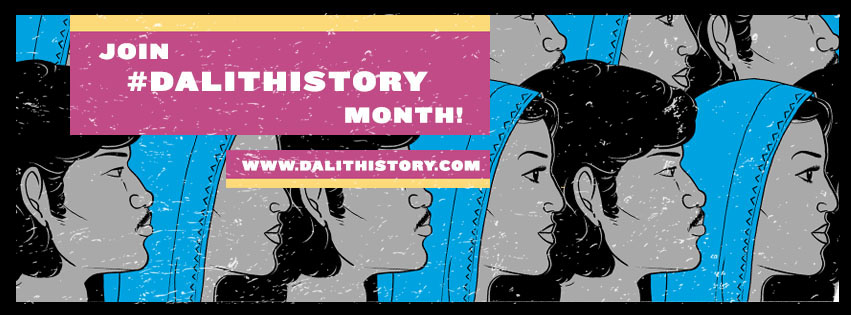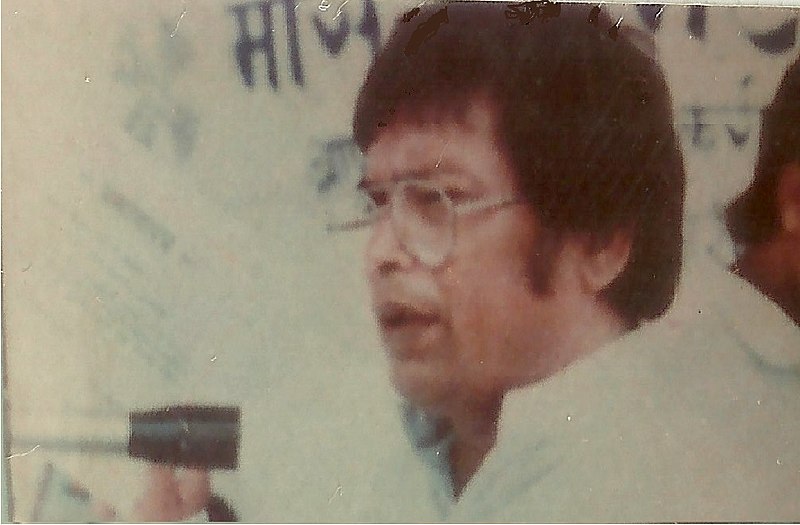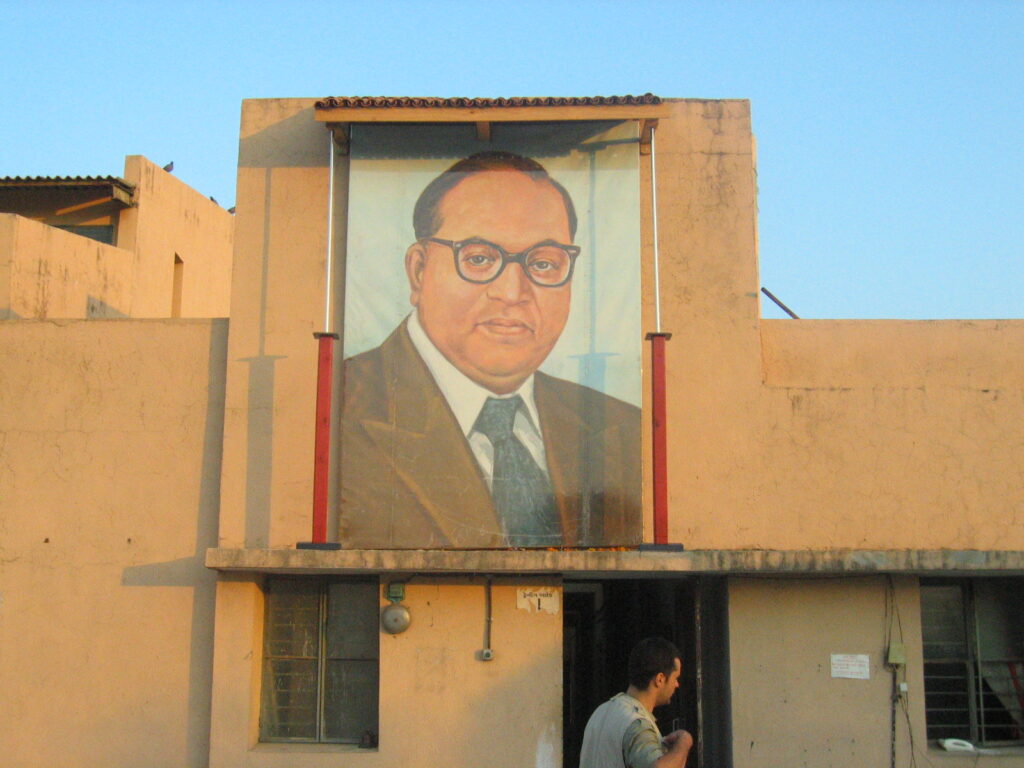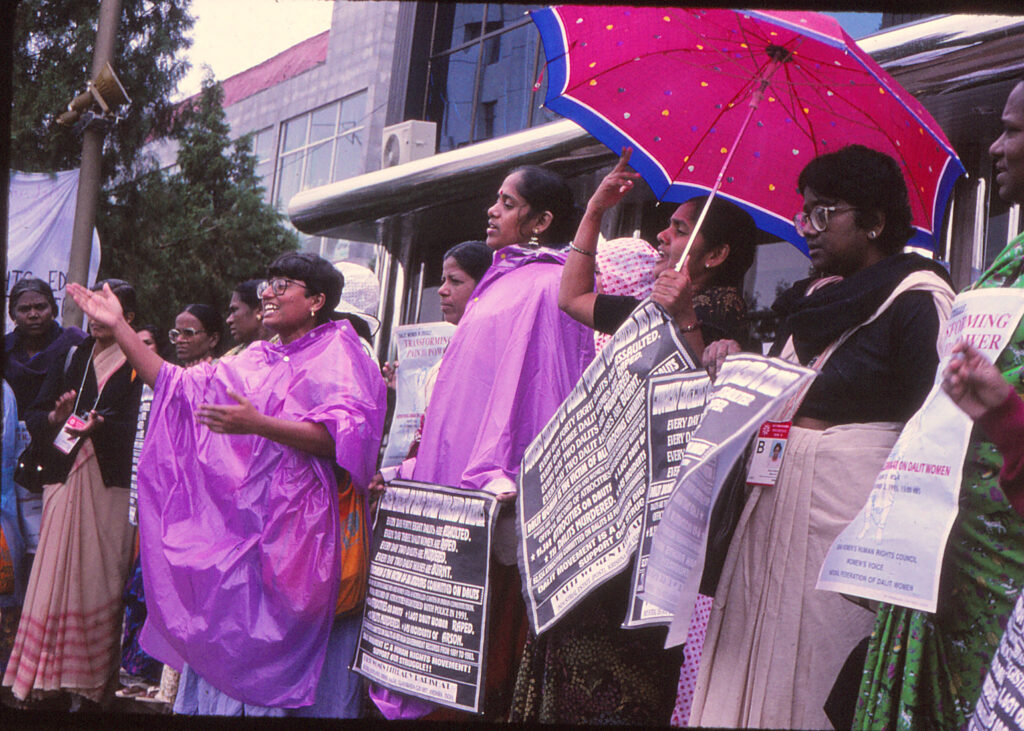Growling Discontent: The Anti-Casteism of the Dalit Panthers

On August 15, 1972, India’s 25th Independence Day, Raja Dhale, co-founder of the Dalit Panther Movement, authored an explosive piece titled ‘Kala Svatantryadin’ (Black Independence Day) in a Marathi magazine, Sadhana. The piece was peppered with powerful imagery wherein he asserted the aggressive Dalit position against caste atrocities by laying bare the contradictions of a postcolonial state grappling with a centuries-old system of injustice. In a crude and discomforting voice, the Dalit Panthers expressed a latent rage against the failure of Indian state mechanisms in enforcing caste justice.
Social stratification in Hinduism is based on the ancient Varna system which defines the obligations of ‘caste’ groups based on lineage and occupation. At the top of this order are the Brahmins (priests), followed by Kshatriyas and Vaishayas (warriors and merchants), and Shudras (manual labour) at the bottom. Outside the Varna system is a fifth and the lowest (out)caste—the ‘untouchables’, or the Dalits, who are considered ritualistically impure due to the “menial labour” they perform, including manual scavenging, tanning, and crematorium work. A Hindu is born into a caste and any attempt to change it through marriage or socialization with other castes is viewed as a gross aberration. While plagued with a slew of destructive norms, the fundamental viciousness of the caste system lies in its percolation into every aspect of one’s life.
Those in upper castes are granted greater access to resources, including jobs, education, housing and land, and access to vital needs such as drinking water from village wells, while those who fall outside the caste system, namely the Dalits, are relegated to sub-human status and face extreme violence and discrimination if they attempt to challenge their oppression. Since India’s independence, there have been numerous efforts from both civil society as well as the state to defang the caste system and equalize many of the historic socioeconomic divisions, chiefly due to the advocacy of the Dalit statesman and architect of the Indian constitution, Dr. Bhimrao Ramji Ambedkar. The Indian Constitution abolishes untouchability in Article 17, but lapses in law enforcement and legal recourse are rife. Caste discrimination is an everyday reality that a Dalit suffers, for entering temples, drinking water from the same well, resisting abduction, or eating in front of upper castes.
The anti-casteism of the Dalit Panthers
In 1969, a central government report by L Elayaperumal shocked the country with chilling details of the extent of the discrimination surrounding “untouchability”. In 1971, in outrage, a group of Dalit writers and poets in the southwestern state of Maharashtra formed the Dalit Panthers. Many Dalit youth who sought to fight back against caste-based injustice joined the organisation, which articulated a new and more radical strand of anti-casteism with heavy Marxist undertones. Seeking a “complete revolution”, as opposed to “partial change”, the Panthers’ popularity reached an all-time high when they were approached by the Gavai brothers in 1974. The Gavai brothers, Gopal Nathu and Babruvahan Nathu, were Dalit labourers who had their eyes gouged out by villagers at the behest of an upper-caste man. An eventual meeting with then-Prime Minister Indira Gandhi proved futile, although it was a pivotal point for establishing certain credibility among the Dalit Panthers in Maharashtra.
The popularity of the Panthers in the 1970s paralleled the tumult of rights-based political agitation across the globe: Iranians overthrew the oppressive Shah regime, African-Americans participated in civil disobedience for racial equality, Black South Africans militantly opposed Apartheid, feminist resistance gained steam globally and students in the United States led the Anti-war campaign. The Dalit Panthers drew inspiration from the Black Panthers in the United States and advocated a hardline mechanism to achieve the ‘annihilation of caste’, the dream of Dr. Ambedkar. However, unlike their American counterparts, the Dalit Panthers did not initiate any violence during their existence, but this did not deter the effectiveness of the organisation. At its zenith in the mid-1970s, the Dalit Panthers emerged as a formidable political movement in Maharashtra and had a regional presence in Delhi, Punjab, and Gujrat by organizing mass demonstrations and inventive pamphleteering in rural areas.

The Panthers’ limited, albeit significant, presence can be attributed to its inclusivity. According to J.V. Pawar, one of the movement’s co-founders, the Panthers uniquely prompted a shift in the mindsets of Dalit youth with a far-reaching and a fierce appeal. For the Panthers, a Dalit included anyone who was a “member of scheduled castes and tribes, neo-Buddhists, the working people, the landless and poor peasants, women and all those who (were) being exploited politically, economically and in the name of religion.” The Dalit Panthers organised mass street demonstrations and shed light on the everyday caste violence which was often hidden under the facade of a functioning societal order.
With growing recognition and popularity, the Panthers sought to reach a larger group of people. Komal Mohite, doctoral candidate in the Department of History at McGill University, notes that literature became the strongest arm of the Dalit Panthers movement. Mohite, who is a Dalit scholar and activist, argues that the Dalit Panthers engaged in a revolutionising challenge against “Hindu Literature” or “white collar” knowledge. All founders of the Panthers were prominent Marathi writers, and a wave of Dalit autobiographies and realist stories of suffering featured among popular Marathi literature of the time. In an interview with Mohite, she notes that “the Dalit Panthers were the direct descendants of an emerging Dalit literary tradition” and that both (i.e. the Panthers and the literary wave) “foregrounded a materiality of Dalit experience”. In essence, the radicalism of the Dalit Panthers and their literary works lay in the reclamation of Dalit bodies.
Fading Dalit Panthers
The Dalit Panthers lasted for six years, during which their activism grew from smaller localised efforts by a group of urban Dalit youths to an organised political force. The focus of their action, however, remained in rural areas where Dalits were being most exploited.
The last few years of the Dalit Panthers were marred by infighting over the tense marriage of Marxist and Ambedkarite ideologies. The latter advocated for constitutional state protection for the lower castes and the former distrusted the state to take responsibility for Dalit rights. Eventually, heightened fears of police repression in the wake of the Emergency declared by Prime Minister Gandhi led to the dissolution of the Dalit Panthers in May 1977.
Radical Dalit activism today
Although the presence of the Dalit Panthers in Maharashtra was short-lived, their legacies lived on for a few decades following their demise. In the southern states of Tamil Nadu and Karnataka, ideologues of radical Dalit anti-casteism became popular regional figures. However, despite the blatant reality of caste and anti-casteism, little is remembered of the revolutionary Dalit Panthers today. This selective amnesia mostly stems from historical blindness towards Dalits in general and their anti-state radical politics in particular. Anti-casteism has to be made palatable for the upper caste gaze, often through a nationalist lens. A Dalit man can be the President of India. However, a Dalit scholar and civil rights activist will be branded anti-national should he challenge state authority.

Caste discrimination is often obscured for those who are born with a non-Dalit name. Discrimination manifests when a Dalit is scalped out of sheer vanity by a Brahmin, but also when a middle-class Indian home sets aside a separate set of utensils for their domestic help. Such inequality is aggravated during times of crisis. In the wake of the government of India’s response to COVID-19, the majority of migrant labour travelling on foot to their hometowns are lower caste people hoping to flee starvation in a lockdown. It is telling that the central Indian government hastily implemented a lockdown without planning safety nets for daily wage labourers, and, in turn, are treating those fleeing hunger as a threat to public health. This is the most recent instance of institutional short-sightedness towards realities of caste discrimination that aggravates the social plight of most Dalits in India.
Time and time again, Dalits have fought back against caste injustice. In the age of the internet, digital platforms have emerged as a medium for the political assertion of caste reality, including for those such as Forward Press, dalithistorymonth, dalitnation.com, Equality Labs, and the dalitpanthers_archive, among hundreds of others. These websites create content with the specific objective of challenging the dominance of Brahminical knowledge.
Radical Dalit action, whether in the form of a jarring suicide note or transmedia art, has long-since been a common political response among the Dalit youth. Young leaders such as Chandrashekhar Azad, a lawyer from Saharanpur in Uttar Pradesh, have risen to the forefront of anti-casteism movements and larger-scale national resistances against majoritarian injustice, such as the Citizenship (Amendment) Act, 2019 (CAA) and the proposed National Register of Citizens (NRC). In a struggle against steadily rising crimes against Dalits in India, the current demands of reclaiming public places and attaining political representation mirror many of the progressive calls introduced by the Dalit Panthers in the 1970s.

In its unfortunate fact, “untouchability” is played out in every aspect of a Dalit’s public life, and discrimination follows them everywhere—in workplaces, educational institutions, shopping malls, hospitals, and foreign countries. In courthouses donned by framed pictures of the beloved Babasaheb Ambedkar, a lower caste man is sentenced to death by the state for a crime an upper-class, upper-caste man can easily bail out of. It is important to remember the political assertions of Dalits in India and the diaspora. The Dalit Panthers expressed a discomforting mode of political opposition to state inaction over caste violence. They believed in change beyond politics of representation and state protection against caste discrimination—one that redistributed land, wealth, and political power, however discomforting it may be. Rural processions, literature, and Dalit pride of the Panthers are an iconic moment for Dalit and Indian history. Their contributions to a less unjust society deserve to last in historical memory.
Featured image: Dalit History Month Launch by Caselchris1 is licensed under C.C. BY 4.0. No changes made.
Edited by Chanel MacDiarmid.
